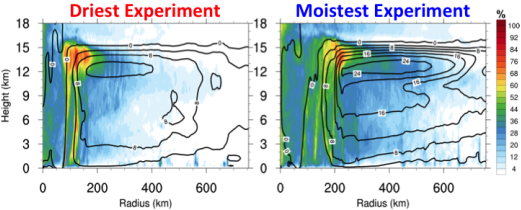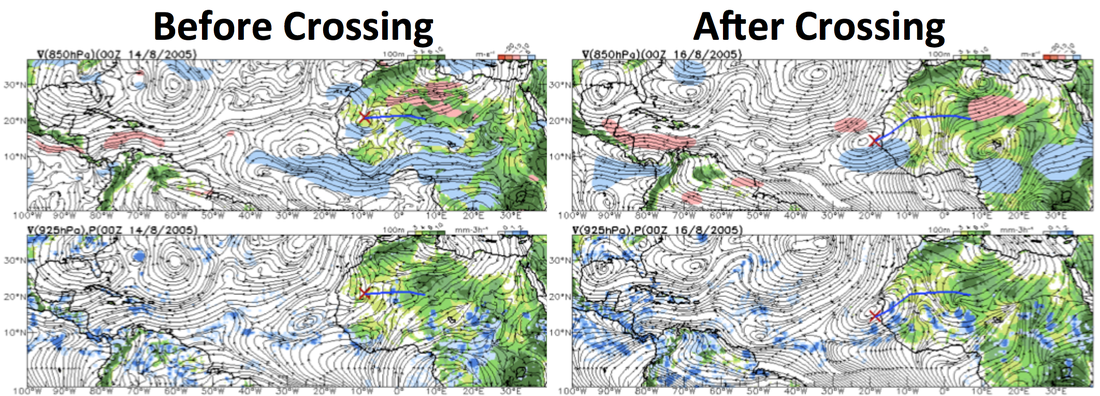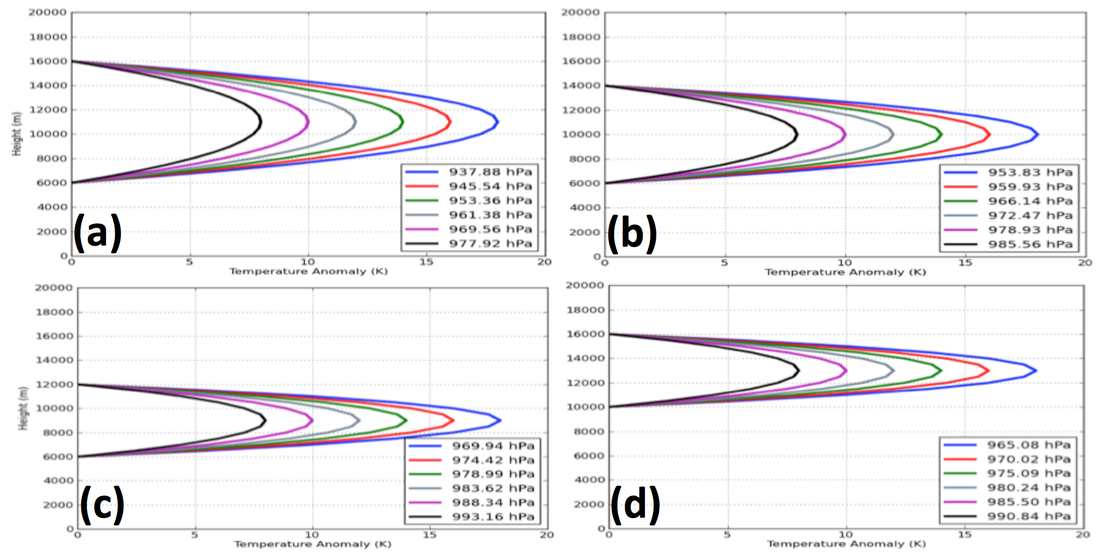Role of Moisture on tropical cyclone development
|
What is the role of moisture on tropical cyclone development?
|
Time-averaged (24 hours before intensification) cross sections of the percentage of updrafts exceeding 0.05 m/s (shaded) and the mass streamfunction (contoured every 4x10^8 kg/s) of the driest and moistest initial moist entropy profiles.
|
African Easterly Waves and Tropical Cyclogenesis
|
Do African Easterly Waves (AEWs) that develop north of the African Easterly Jet (AEJ) contribute to tropical cyclogenesis?
Dynamically, how do these waves cross to the south from the dry Sahara to the moisture-rich rainy region?
|
Streamlines at 850 hPa (contours) and zonal wind at 600 hPa (shaded) to represent the AEJ. Topography is shaded in green. The blue line displays the track of the AEW. This AEW ultimately became Hurricane Katrina (2005).
|
Warm core development and tropical cyclone intensity change
|
How does a varying height and/or depth of a warm core change a tropical cyclone's intensity?
|
Idealized parabolic warm cores with
a vertical depth from 6000 m to 16000 m, (b) Vertical depth from 6000 m to
14000 m, (c) Vertical depth from 6000 m to 12000 m, and (d) Vertical depth from
10000 m to 16000 m. The resulting MSLP for each parabola is shown.
|


